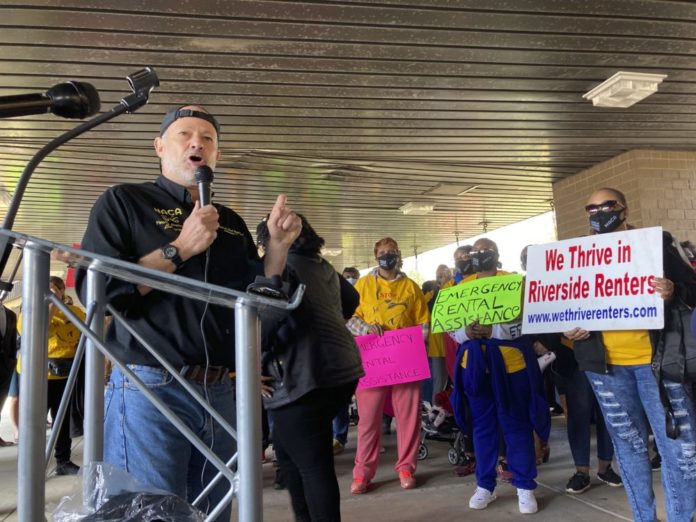
ATLANTA (AP) — Georgia officials struggling to distribute federal funds to prevent evictions have outlined plans to increase the speed at which they get the money to landlords and renters.
The improvement plans were submitted last week to the U.S. Department of the Treasury. If they are not approved, the state risks losing some of the $550 million it was allocated in a first round of federal rental aid.
State officials overseeing the rental disbursements are developing a tool to easily check whether renters already got help and turning to colleges and universities for workers on evenings and weekends, Patrick Farr, director of the state Office of Planning & Budget said in the improvement plan dated Nov. 15.
They are also expanding efforts to raise awareness about the funding.
“The GRA program understands the urgency of providing rental and utility assistance to tenants, landlords and utility providers as quickly as possible throughout the state,” Farr said.
Georgia is under pressure to improve its distribution of rental assistance.
By mid-November, less than 10 percent of the $550 million had gone out to help state residents struggling with rent or utility payments during the pandemic. The money is part of $46.5 billion in rental assistance that Congress approved for U.S. communities, including another $437 million for Georgia.
Nationally, more than $10 billion had gone out through Sept. 30, with the pace of spending picking up through the summer, according to the Treasury department. Officials credit that money with helping avert a wave of evictions after the U.S. Supreme Court in late August allowed evictions to resume.
But treasury officials could claw back some of the money from slower places such as Georgia and reallocate it to jurisdictions that have gotten it out to tenants and landlords faster. More than 30 states could be at risk of losing funds, according to a report this month by the National Low Income Housing Coalition.
But the report singled out Georgia, Ohio, Arizona and Tennessee for their slow disbursement of aid and large populations of renters. Most states had spent more than 10 percent of their first round of allocations by the end of September, and that number climbed to between 71% and 90% in four high-performing states: New York, California, Illinois, and New Jersey, according to the report.
An email to the Treasury department on Friday to check on the status of Georgia’s improvement plan was not immediately returned.
Tenants facing eviction in Georgia said at a protest last week that they have struggled to reach officials at the Georgia agency administering the rental assistance program, faced onerous requests for additional documentation and been bounced to other agencies.
In its plan to the Treasury Department, the state said it has steadily improved the pace at which it processes applications for help, and it projected increases in the number of households it will serve — and the amount of money it will distribute — in each of the next few months.
It had approximately 33,000 applications pending payment as of Nov. 12 and anticipated they would require about $200 million under its average payment per applicant of $6,300.
Bruce Marks, CEO of the Neighborhood Assistance Corporation of America, said many of the measures in the state’s improvement plan should have been implemented months ago. NACA organized last week’s protest.
“This is basic stuff,” he said.
State officials said they faced numerous obstacles implementing the program, including changing guidance from federal officials and an electronic portal that required constant updates.
Other places in the state received their own set of rental funds, and the state was initially not processing applications from those jurisdictions.
But it expanded eligibility to the entire state in August, which required a tool to ensure benefits were not duplicated, state officials said.
It has now identified a vendor to provide that tool, according to the improvement plan.
It has also identified 13 regions throughout the state to assign “outreach coordinators” to increase awareness of the assistance program and find opportunities and ways to help people apply.
For more from Fresh Take Georgia and the latest updates, follow us on Facebook and Twitter.
















